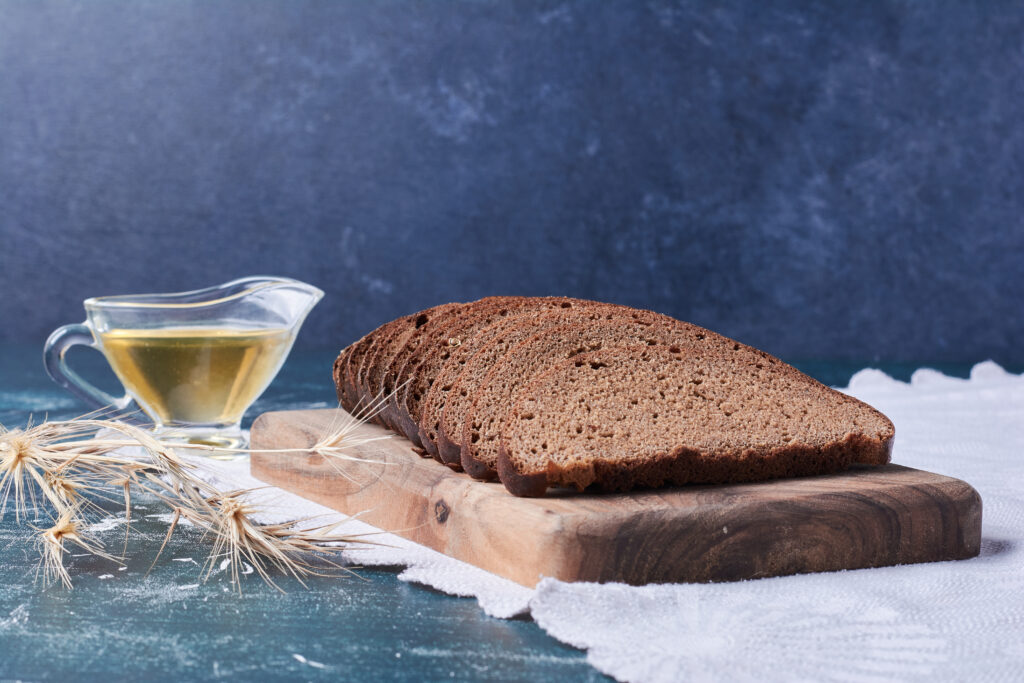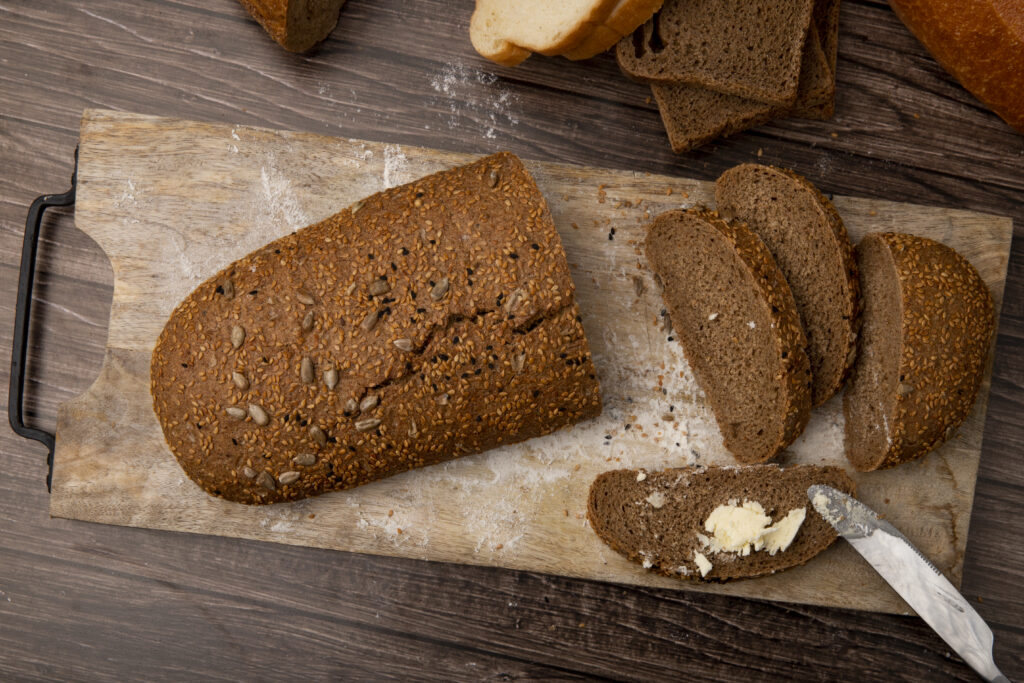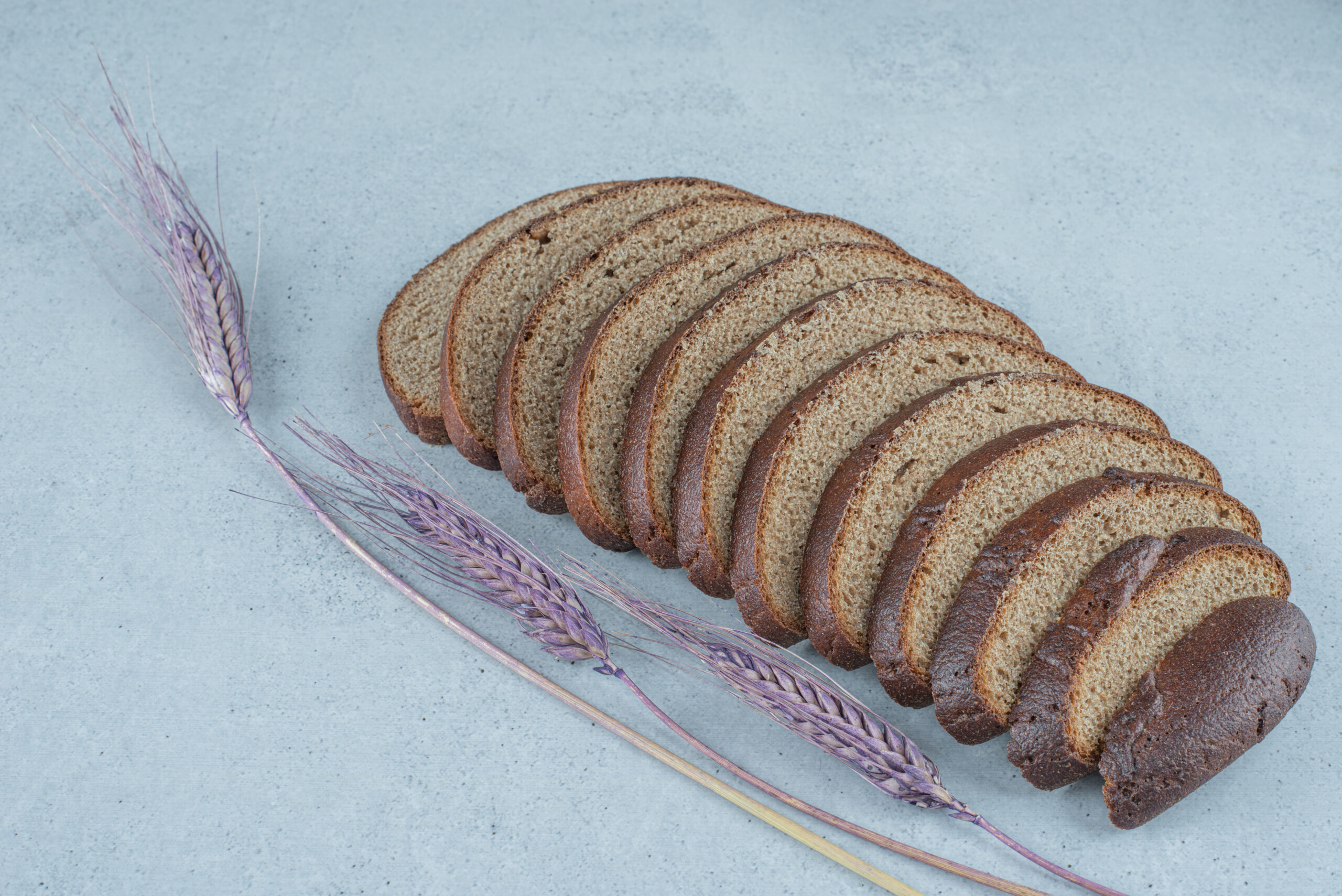Pumpernickel bread is a unique and hearty bread that hails from Germany, renowned for its deep, rich flavor and dense texture. This type of bread is typically made with coarsely ground rye flour, which gives it a distinct taste and color that sets it apart from other breads. Unlike standard white or whole wheat options, pumpernickel bread is slightly sweet, thanks to the natural sugars in the rye, and has a slightly tangy flavor due to the fermentation process. For home bakers looking to try something different, homemade pumpernickel bread offers an opportunity to explore traditional baking techniques while creating a delicious loaf that can be enjoyed in numerous ways.
Understanding the Distinct Flavor Profile of Pumpernickel Bread

The flavor profile of pumpernickel bread is primarily characterized by its complex and robust taste. The use of rye flour not only contributes to the bread’s dark color but also imparts a slightly nutty and earthy flavor. The fermentation process, often involving a sourdough starter, adds a tangy note that beautifully balances the natural sweetness of the rye. This unique combination makes pumpernickel bread an excellent accompaniment to a variety of toppings, from creamy spreads to hearty meats and cheeses.
Another aspect that adds depth to pumpernickel bread is the Maillard reaction, which occurs during the baking process. As the bread bakes at a high temperature, the sugars and amino acids in the dough react, creating a crust that is both flavorful and aromatic. This crust not only enhances the taste but also adds a satisfying texture that contrasts with the soft interior of the loaf. Overall, the flavor profile of pumpernickel bread is a delightful exploration of sweet, savory, and slightly sour notes, making it a versatile choice for any meal.
Key Ingredients for Authentic Pumpernickel Bread
To create an authentic loaf of pumpernickel bread, selecting the right ingredients is crucial. Below is a list of essential components that contribute to the bread’s signature flavor and texture.
- 2 cups coarsely ground rye flour
- 1 cup bread flour
- 1 ½ cups warm water (about 110°F)
- 1 tablespoon active dry yeast
- 1 tablespoon molasses
- 1 tablespoon caraway seeds (optional)
- 1 teaspoon salt
Coarsely ground rye flour is the star ingredient, providing the characteristic color and flavor. Bread flour is included to enhance the structure and provide some elasticity to the dough. Warm water helps activate the yeast, while molasses adds a hint of sweetness and contributes to the dark color of the bread. For those who enjoy the traditional flavor, caraway seeds can be added, giving an aromatic touch to the loaf. Lastly, salt is essential for flavor enhancement and regulating yeast activity during fermentation.
Step-by-Step Guide to Making Homemade Pumpernickel Bread
Creating homemade pumpernickel bread is a rewarding process that requires patience and attention to detail. Follow this step-by-step guide to bake your own loaf.
- In a large mixing bowl, combine the warm water and active dry yeast. Allow it to sit for about 5 minutes until foamy, indicating that the yeast is active.
- Add the molasses, salt, and caraway seeds to the yeast mixture and stir well to combine.
- Gradually add the coarsely ground rye flour and bread flour to the wet ingredients, mixing until a shaggy dough forms.
- Transfer the dough onto a lightly floured surface and knead for about 8-10 minutes. The dough should become smooth but remain slightly sticky. If it’s too sticky, incorporate more bread flour, a tablespoon at a time.
- Place the kneaded dough in a greased bowl, cover it with a damp cloth, and let it rise in a warm area for about 1-2 hours, or until it has doubled in size.
- Once the dough has risen, punch it down gently to release any air bubbles. Shape it into a round or oval loaf and place it onto a parchment-lined baking sheet or into a loaf pan.
- Cover the loaf again with a cloth and let it rise for another 30-40 minutes.
- Preheat your oven to 375°F (190°C) during the final rise. Once the dough has risen again, you can optionally score the top with a sharp knife for decorative purposes.
- Bake the bread for 30-35 minutes, or until the crust is dark and sounds hollow when tapped on the bottom. If you prefer a softer crust, cover the loaf with foil for the last 10 minutes of baking.
- Remove the bread from the oven and let it cool on a wire rack before slicing.
Tips for Perfecting Your Pumpernickel Bread

To ensure your pumpernickel bread turns out perfectly, consider the following tips. These insights will help you troubleshoot any potential issues and enhance the overall baking experience.
- Temperature Matters: Make sure your water is warm but not hot, as excessive heat can kill the yeast.
- Don’t Rush the Rise: Allowing the dough to rise adequately is crucial for developing flavor and texture. Be patient during both rising periods.
- Use a Kitchen Scale: For precise measurements, especially when working with different types of flour, a kitchen scale can be incredibly helpful.
- Experiment with Texture: If you prefer a denser bread, you can adjust the ratio of rye to bread flour. More rye will yield a heavier loaf.
- Storage: Pumpernickel bread keeps well in a sealed bag or container at room temperature for several days. For longer preservation, slice and freeze the bread.
Variations to Consider for Your Pumpernickel Bread
While traditional pumpernickel bread is delicious on its own, there are several variations you can try to customize your loaf. Incorporating different ingredients can create exciting new flavors and textures. For instance, adding seeds like sunflower or pumpkin can introduce a delightful crunch. You could also incorporate dried fruits such as cranberries or raisins for a hint of sweetness that complements the bread’s earthy flavor.
For those who enjoy a spicier kick, consider infusing the dough with spices like fennel or anise, which can enhance the aromatic quality of the bread. Another great variation is to make a pumpernickel sandwich loaf, perfect for creating hearty sandwiches. Simply shape the dough into a loaf instead of a round shape and follow the baking instructions as intended.
Regardless of how you choose to customize your pumpernickel bread, the key to a fantastic final product lies in the quality of your ingredients and the care you take during the baking process. With its rich history and complex flavors, homemade pumpernickel bread is not only a treat for your taste buds but also a delightful project for any home baker.

Leave a Reply